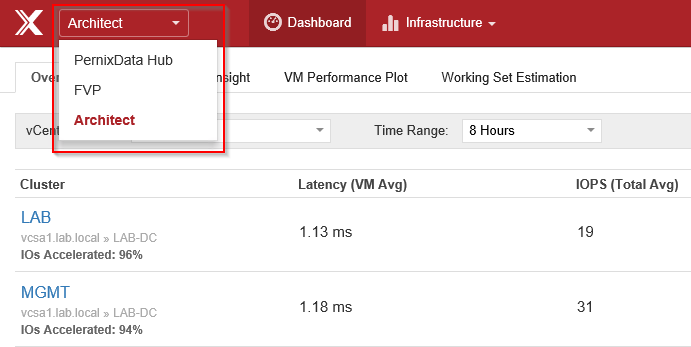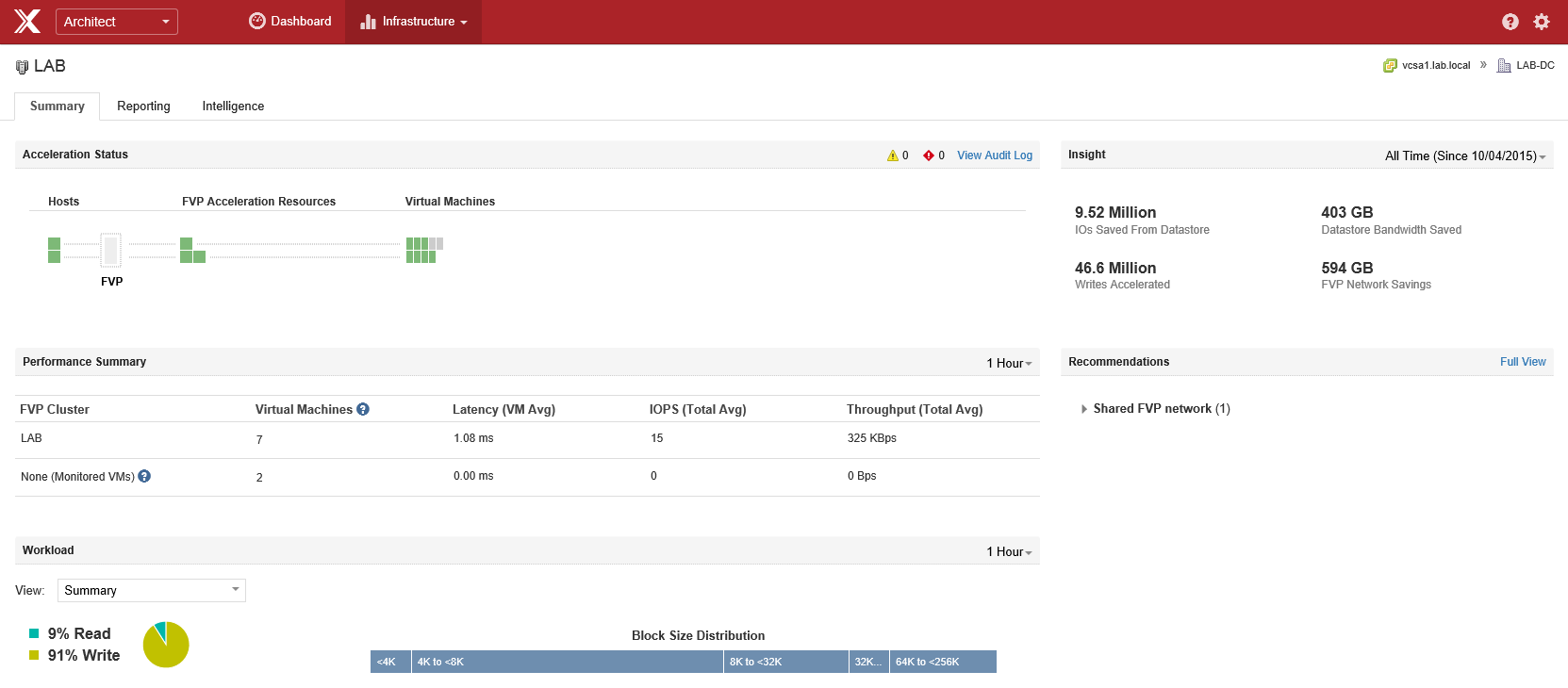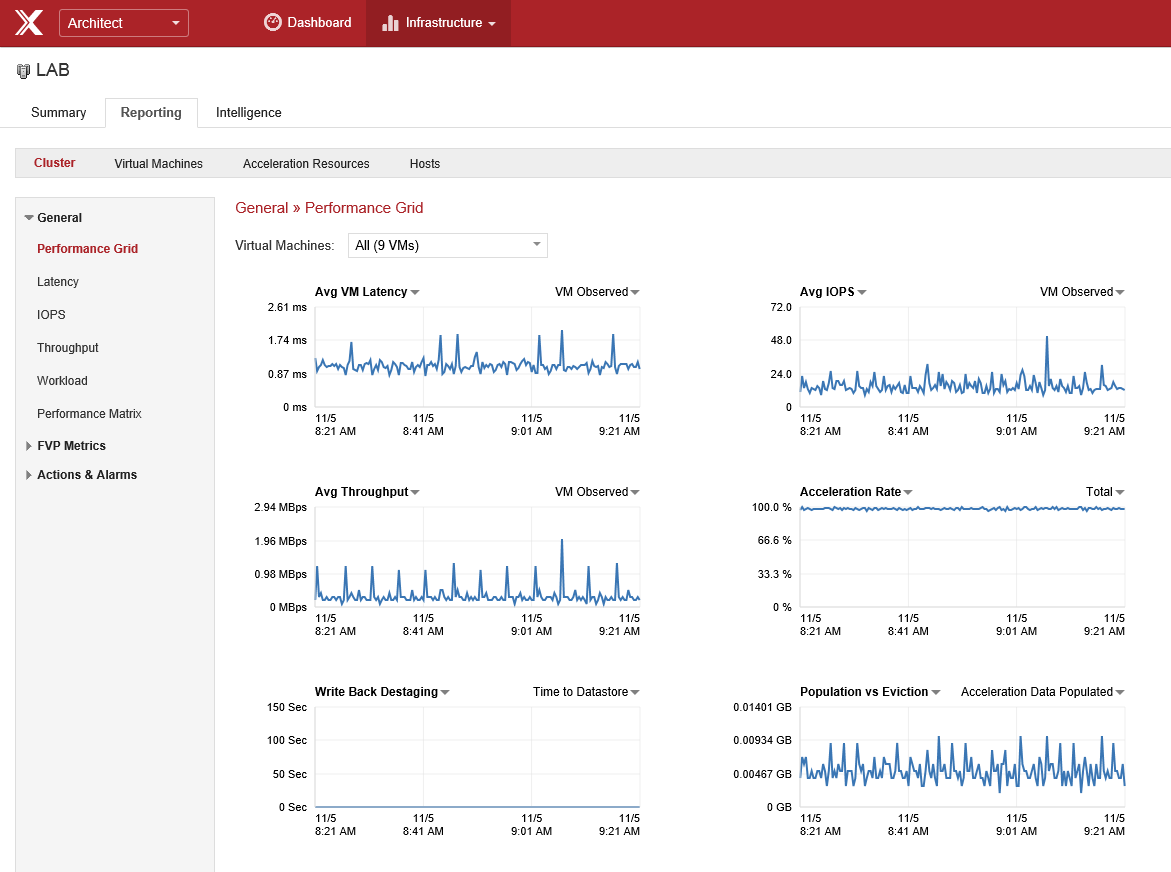PernixData Architect Software
With the general availability of PernixData FVP 3.1, PernixData released the first version of PernixData Architect.
One of the biggest problems today is, that management tools are often focused on deployment and monitoring of applications or infrastructure. This doesn’t lead to a holistic view over applications and related data center infrastructure. You have to monitor at several points within the application stack and even then, you won’t get a holistic view. Without proper information, you can’t make proper decisions. At this point, PernixData Architect comes into play.
PernixData Architect is a software platform and supports the complete IT life cycle from design and deployment over operation and optimization. It supports the decision making process with data gathering and big data analytics. PernixData Architect continuously generates information and recommendations based on gathered data from VMs, storage devices, vCenter, network etc. This information pool can analysed with big data techniques. Data are gathered, data is set into context (this is what information is) and information are linked and combined with recommendations. Here are some examples what PernixData Architect can do for you (Source)
- Descriptive Analytics – Identify and profile the top 10 VMs on latency, throughput and IOPS.
- Predictive Analytics – Calculate server-side resources needed to run a VM in Write Through versus Write Back mode, ensuring optimal hardware is allocated before a problem arises.
- Prescriptive Analytics – Recommend ideal server-side resources based on application patterns.
PernixData Architect is a software-only solution and can deployed with our without PernixData FVP. Without FVP, Architect can be used as a monitoring tool and gives you visibility, management and recommendations. Architect works with any server and storage platform that is compatible with VMware vSphere!
I’ve installed the latest PernixData FVP 3.1 release in my lab and enabled the 30 days trial period for PernixData Architect. You can access Architect through the web UI.

Patrick Terlisten/ vcloudnine.de/ Creative Commons CC0
As you can see, I have two clusters in my lab and both are accelerated using PernixData FVP. One cluster uses Distributed Fault Tolerant Memory (DFTM), the other cluster uses SSDs as acceleration ressources. If Architect is enabled, FVP doesn’t display any stats and refers to the Architect UI. Below a screenshot of the summary screen which gives you a good overview at the first glance.

Patrick Terlisten/ vcloudnine.de/ Creative Commons CC0
Architect includes much more stats than FVP.

Patrick Terlisten/ vcloudnine.de/ Creative Commons CC0
On the “Intelligence” page, you get values for the working set for each ESXi host in the cluster. This is an important value for the right sizing of your acceleration ressources.

Patrick Terlisten/ vcloudnine.de/ Creative Commons CC0
As mentioned, PernixData Architect uses the gathered data to give you recommendations in realtime. Even in my lab cluster, there are things to improve. ;)

Patrick Terlisten/ vcloudnine.de/ Creative Commons CC0
This is only a short overview about PernixData Architect. But you might see now what insight architect can give you. If you are curious to see what PernixData FVP and Architect can do for you, you can simply install both products as part of a proof-of-concept and test them for 30 days. Even if you don’t want to install FVP, Architect can used without FVP. And even FVP can used without acceleration ressources in a monitoring mode.
